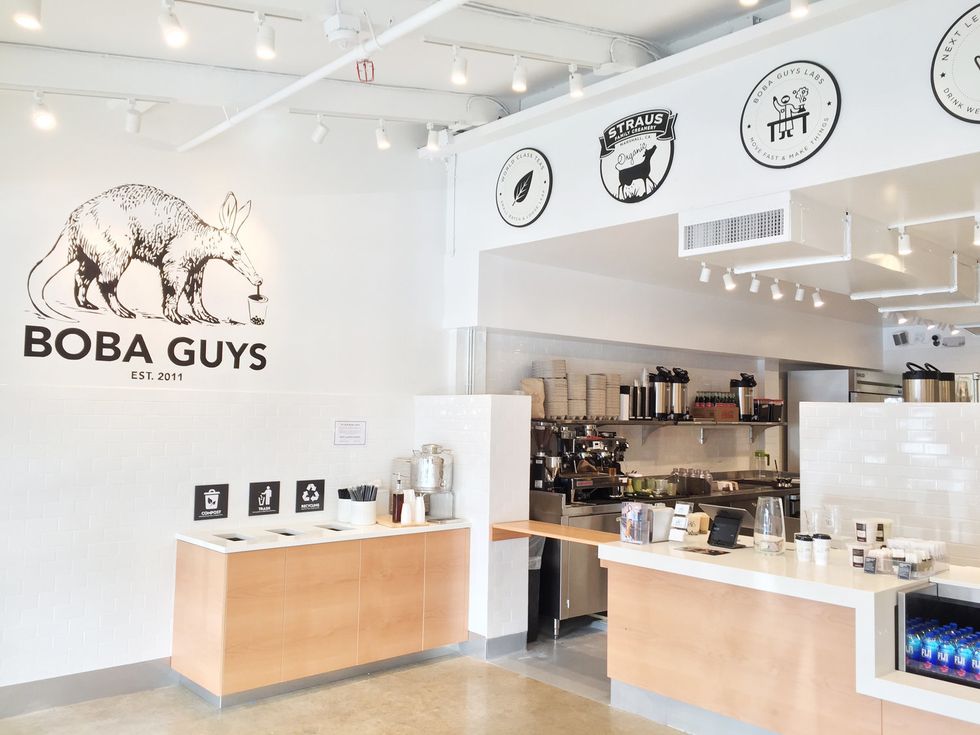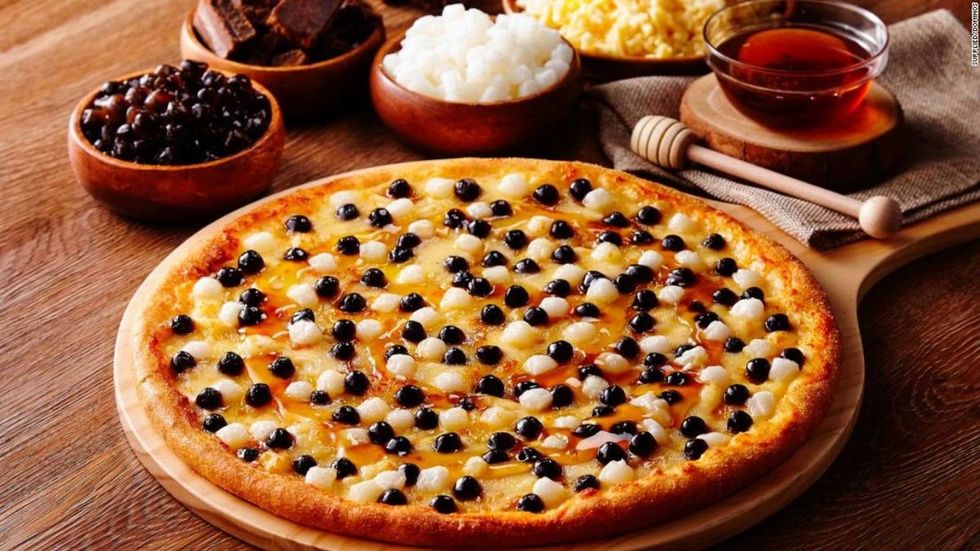Before arriving to the uni, I had never tried or even heard of boba tea. One day during my first semester, I was invited by a friend to one of the five boba tea shops surrounding my university. My first thought was, "why are there so many of these shops located around a college campus, when I have never seen any around my hometown?" After walking in, I noticed that every worker in the store was of Asian descent, and after my first heavenly sip of my size small Taro milk tea with boba, I immediately wanted to know more about this cultural treasure I had been missing out on. This seemingly simple drink I have discovered encompasses a fascinating trail of geographical history and global cultures.
Boba tea is a unique concoction of sweet milk tea and tapioca balls. Interestingly enough, these two commodities originated in opposite parts of the globe. It is therefore essential to track the origins of these products separately and discover that over millennia, trade and cultural diffusion eventually bring both of them into the same country. To begin, the addition of dairy into tea such as milk and butter began with the Tibetan culture and their cultural staple 'butter tea.' Later during the Silk Road trade, milk tea traveled its way to India, and Indians added spices to the tea. Once the European Empire began ruling over the Indian subcontinent, they were not fond of this "spicy tea" and opted for a lighter and softer-tasting alternative, and this is where aristocrats replaced the spices with sugar and honey. In the early 20th century during World War II, the European recipe of milk tea was finally introduced to Taiwan. The second ingredient, tapioca, is a starch derived from the bitter cassava root plant. It is native to South America and was brought to Taiwan by Portuguese and Spanish explorers in the 19th century. Soon enough, the Taiwanese began to enjoy sweetened tapioca ball desserts such as fen yuan. By the 20th century, both tapioca and milk tea existed in Taiwan but in separate food arenas, and it was not until the 1980's that they were combined to create boba tea as it is known today.
Although the exact origin story is debated, there is a widely accepted theory that the creation of boba tea occurred at the Chun Shui Tang teahouse in Taichung, Taiwan. The owner of this tea house, Liu Han-Chieh, had visited Japan and noticed that coffee was being served cold here. He decided to take this innovation back to his teahouse, where he began serving Chinese tea cold alongside his traditional high mountain oolong tea. It soon became his store's best-seller, and in 1987 he held a staff competition challenging his workers to create another tea innovation. A twenty-year-old female store manager liked to eat fen yuan, so in spirit of the competition she decided to add them to milk tea that the store was already selling. This store manager's creation became a smashing hit on the menu among customers, and thus began the rise in popularity and scope of "boba tea" in Taiwan and beyond.
As something begins to diffuse outside of its place of origin, especially food, a process called 'hybridization' tends to occur. Hybridization is "the process of mixing different cultural elements and styles." Through this mixing, a new version is born containing local differences and particularities that in effect transform the object into something greater than its parts. The object begins to showcase diversity and change as it travels through space and time, becoming more unique as it passes through the hands of different cultures. Boba tea is an outstanding example of hybridity in action today.
Shortly after boba tea broke through the market, boba tea shops began appearing in Vietnam, Hong Kong, and China and have contributed greatly to the Asian culture, especially among the youth. Before boba tea, drinking coffee had long prevailed in these countries. In Vietnam, boba tea quickly became a fan-favorite because Taiwanese milk tea is similar in texture to the traditional Vietnamese dessert beverage che, making the locals more receptive to this new drink. However, they did not want to lose their cultural connection to coffee. Soon, the Vietnamese began combining their deep love for coffee with the new craze of boba tea by hybridizing boba tea to incorporate their coffee-drinking culture with that of the Taiwanese boba tea culture. Vietnam tea shops began adding to their menu an iced coffee option with sweet tapioca balls added into it.
The same process occurred in the U.S., another predominant coffee-drinking culture. Boba tea's grand introduction to the U.S. occurred in the late 1990s, when the first dedicated boba tea shop in Los Angeles County opened inside a food court in Arcadia. A vast majority of subsequent stores were owned by immigrants of Taiwanese descent because the San Gabriel Valley in L.A. contains a large Taiwanese and Chinese community due to global immigration trends.

The phenomenon extends farther than just hybridizing boba tea within its beverage form - the concept of boba tea is finding its way into actual foods. In October 2019, the Domino's pizza company has created a "pearl milk tea pizza," and in the following month Pizza Hut follows suit with its own version. In addition to pizza, the drink has also manifested into pearl tea pancakes, pearl milk ice cream cones, and pearl milk pudding. A trend with all of these foods that have been hybridized with boba tea is that they are all American. The U.S. plays a large role in hybridization because many cultures from around the world have interacted with the U.S. at one point, and so the argument can be made that the U.S. is efficient at hybridizing world cultural elements with American elements.

In this manner, hybridity is effectively introducing Taiwanese culture to others who may be unknowledgeable of the Taiwanese culture. This is a good thing for the Taiwanese and a culturally enriching experience for the non-Taiwanese. The process of hybridization is promoting 'boba tea' as a cultural product that is representing Taiwan's culture. This is in conjunction with the shift of the rising cultural identity of minorities in the U.S. Although the tea is being altered to reflect local interests, the fundamental Taiwanese origin is preserved and is encouraged to be celebrated as boba tea traverses the world. In particular, the global success of boba tea amplifies its cultural significance and thus contributes to the reinforcement of Taiwanese cultural identity for other nations based on a new tea drinking culture. Some may argue that since boba tea is found internationally, it has been homogenized and become a 'global brand.' However, boba tea has gone through so many micro-changes in different cultures that it has been transformed over and over again into something unique forever rooted in Taiwanese culture.



















